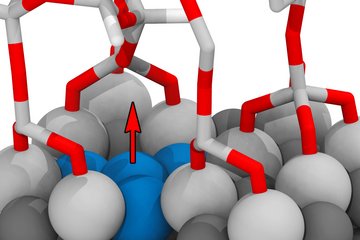All genres
21.
Poster
Using small-scale mechanics to probe the origins of segregation-induced strengthening. Nanomechanical Testing in Materials Research and Development VIII, Split, Croatia (2022)
22.
Poster
Atomic scale observations of Ag segregation in a high angle grain boundary in Cu. PICO 2022, Kasteel Vaalsbroek, The Netherlands (2022)
23.
Poster
Characterization of the atomic structure of grain boundary phases in pure Cu. Sixth Conference on Frontiers of Aberration Corrected Electron Microscopy PICO 2021, vitual, Kasteel Vaalsbroek, The Netherlands (2021)
24.
Poster
From epitaxially grown thin films to grain boundary analysis in Cu and Ti. International Workshop on Advanced and In-situ Microscopies of Functional Nanomaterials and Devices, IAMNano, Düsseldorf, Germany (2019)











